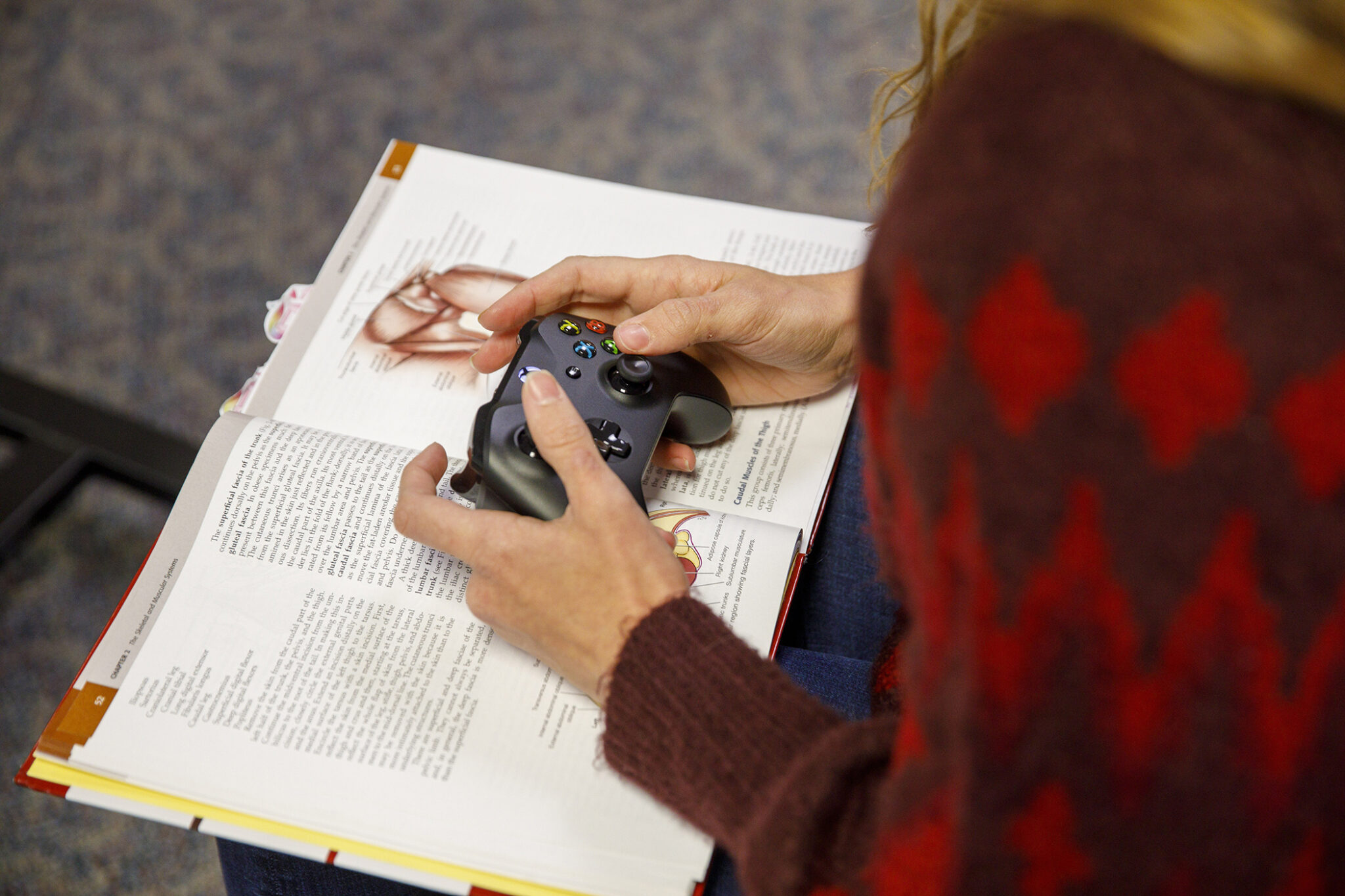
In addition to decreased space in the lab, the veterinary college admitted a record number of students in fall 2020: 125, up from 114 the previous year. And tragically, a fellow anatomy professor, who would typically assist in teaching the class, passed away in the summer. As Aug. 14 approached, MohanKumar needed a new plan.
“I’d been exploring digital options before the pandemic, but all of them were bulky and stationary, and that was not going to work in our new learning environment,” he said.
MohanKumar found a more flexible option in a 3D anatomy learning platform, and the department head and the college administration wholeheartedly approved of acquiring a license for the new tool. With this technology, MohanKumar was able to digitally reconstruct cases with CT or MRI images from the veterinary clinic, allowing students to dissect 3D animals in three-person stations using Xbox controllers.
While half his class worked with embalmed animals in the lab, the other half worked on digital animals. The groups switched every other day, allowing students to experience both environments.
Prior to each class, MohanKumar uploaded videos dissecting an animal using the techniques required for the day’s lesson. He then uploaded instructions on the new digital platform and shared it with students the day before class.
The move to online learning means students watch lectures before face-to-face instruction time and spend their in-class time with hands-on learning and connecting with peers.
“This is the best way I’ve found of teaching anatomy in more than 25 years in the field. Students are excited, and we can explore concepts earlier than we ever have before,” said MohanKumar. “In a time when students are feeling disengaged, this learning practice has brought them closer together.”
“Students are moving away from rote memorization and experience a more meaningful learning experience.”
Puliyur S. MohanKumar
University of Georgia’s College of Veterinary Medicine

Breck Peterson use an Xbox controller to navigate canine anatomy doing a virtual dissection class. (Photo by Peter Frey/UGA)
Electronic stations record the dissections, and all the cases are available to students for four years.
“My students from last year approach me and tell me how jealous they are that this technology was not available to them last year,” he said.
To further engage students, MohanKumar acquired an old ultrasound machine and allowed them to bring in pets and practice after hours, while observing social distancing and face covering guidelines.
“It’s not required, but students love the hands-on learning and connecting with each other. There is not a single day when I don’t have students join.”